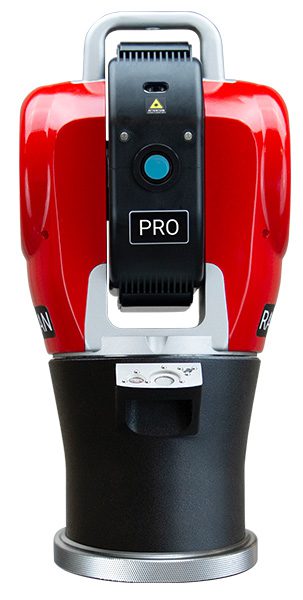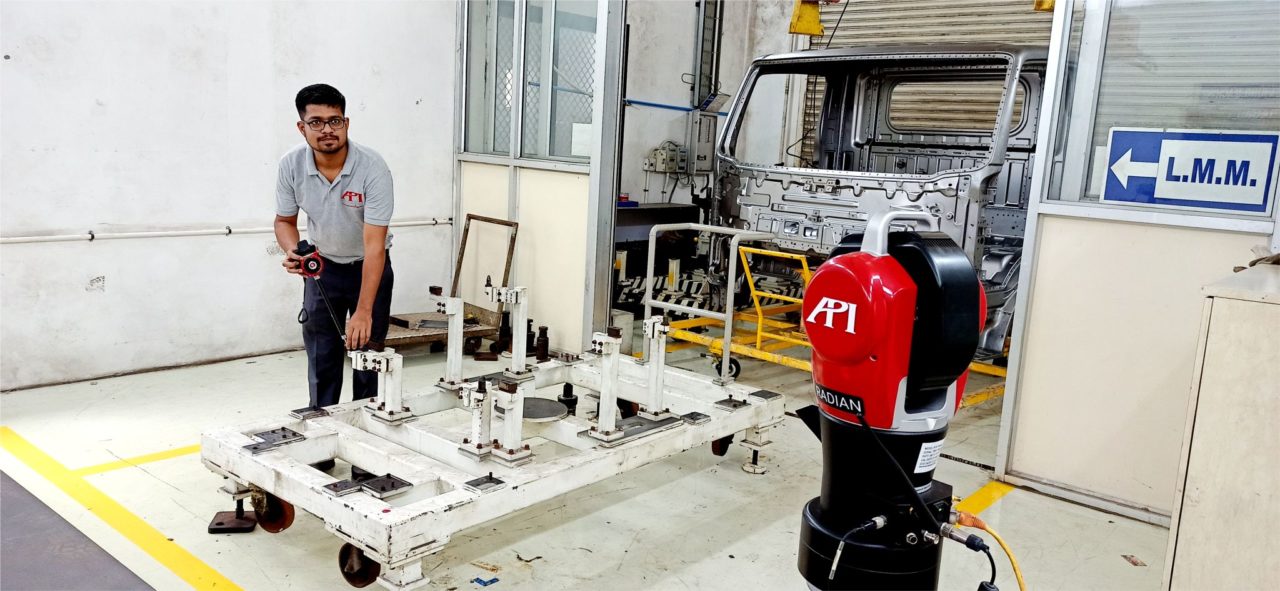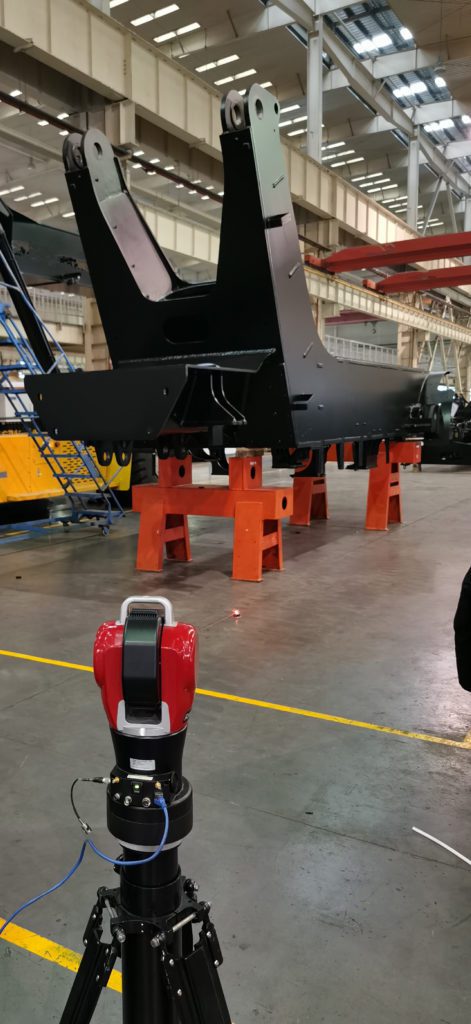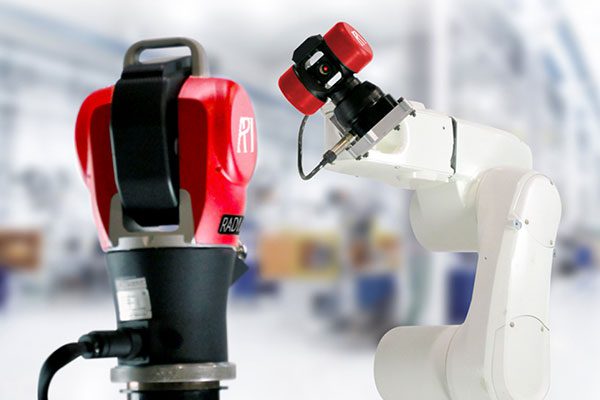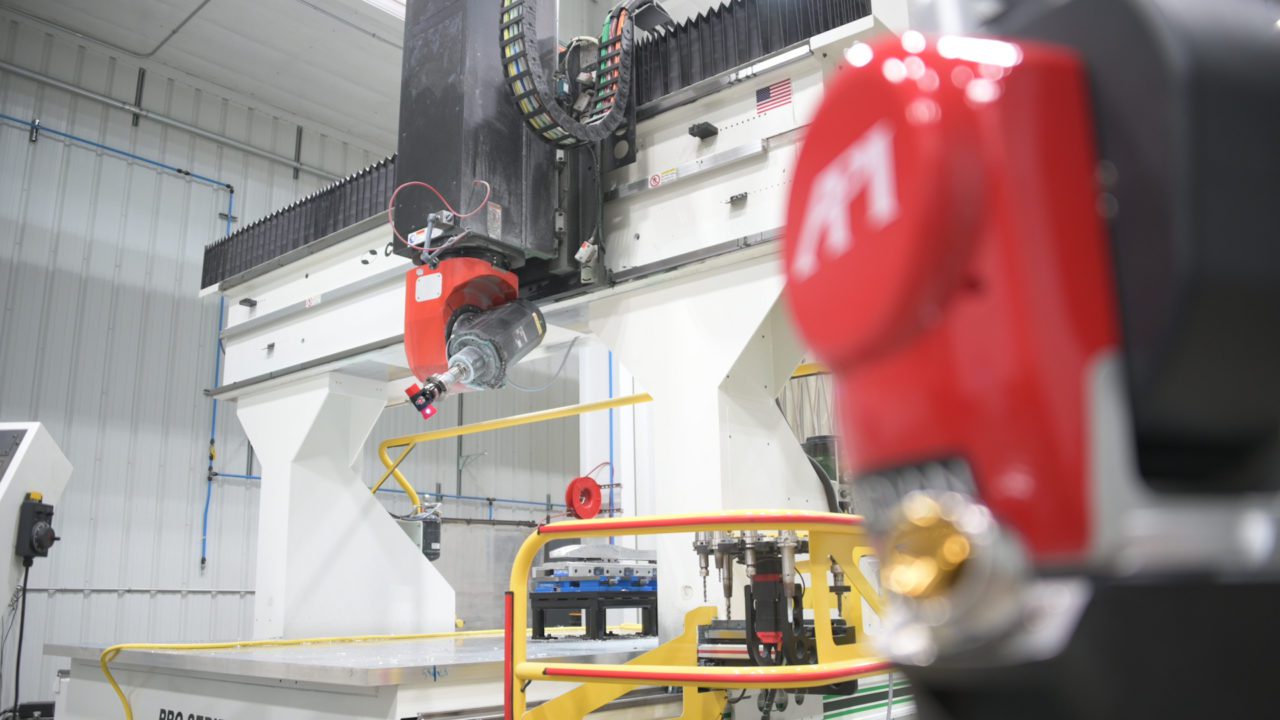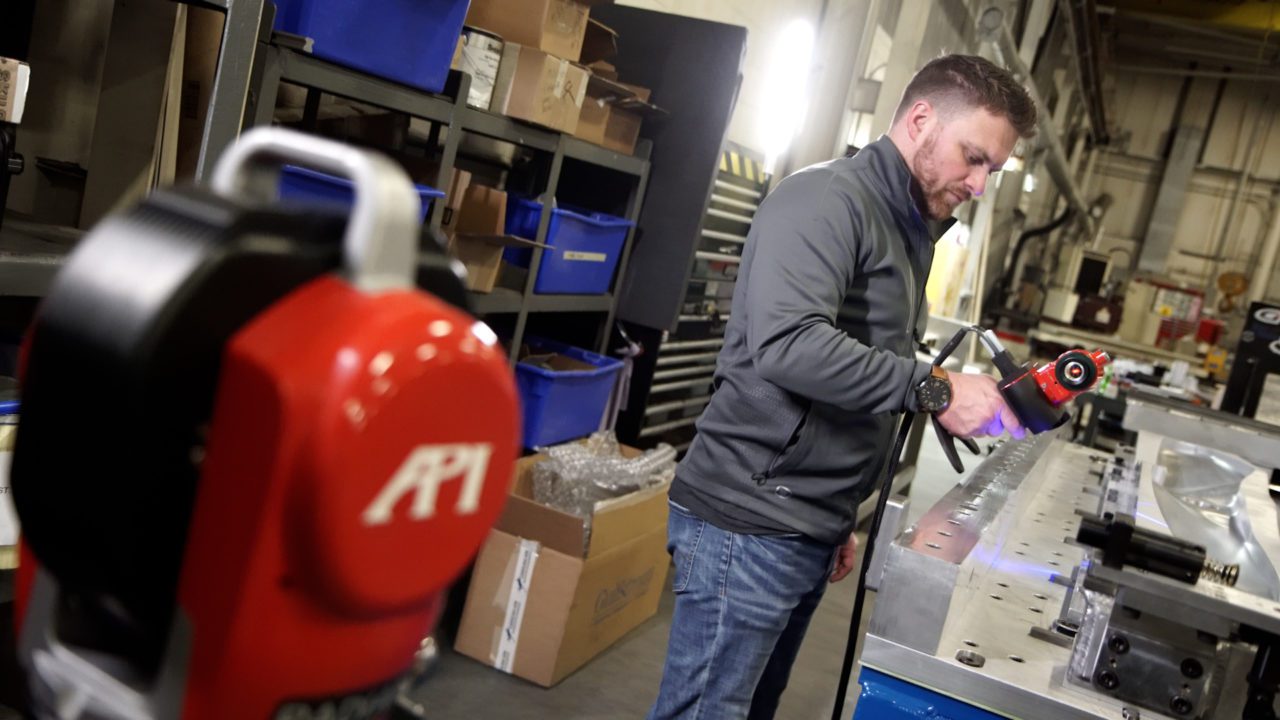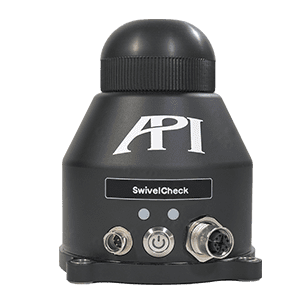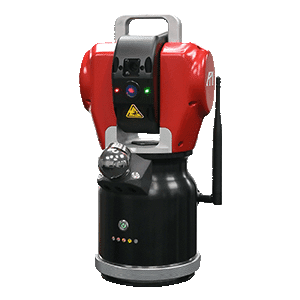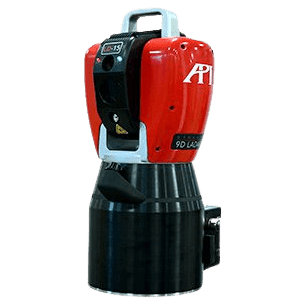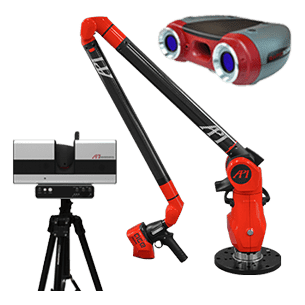Invention of the Laser Tracker
In the more than 30 years since Dr. Lau invented the Laser Tracker, they have become an essential tool at manufacturing sites in many different industries around the world. Laser Trackers offer portable measurements for part inspection and verification, assembly alignments, machine calibration, and much more at CMM-level accuracies. They have revolutionized quality inspection processes, allowing for more complex designs to be produced at higher speeds and tighter tolerances and brought to market.
Laser Tracker Basics: Understanding the Tech
So, in this “How it Works” article, we break down how these vital pieces of dimensional metrology equipment work. Essentially, Laser Trackers turn the environment around them into a 3-axis coordinate plane, in which the tracker serves as the point of origin, where the X, Y, and Z values are all zero.
The tracker is able to measure points in all 360 degrees of space around it horizontally, and 138 degrees vertically. This coordinate plane extends 80m from the tracker in all directions, and for API’s Radian Laser Tracker there is no minimum measuring distance. The tracker is able to hit points in this plane within a handful of microns, depending on the distance.
Click here to watch how laser trackers work on our youtube channel.
Fundamentals: Components & Functions
To perform these measurements, the Laser Tracker relies on three main components: the laser, the Vertical and Horizontal Encoders, and the software for data analysis.
The Laser The first, and most obvious, component of the Laser Tracker is the laser itself. The laser is sent out of a main port in the tracker to a target, which reflects the beam and returns it to the tracker. These lasers, like the Class II Helium Neon laser Radian uses, send out as many as 1000 points per second, and the velocity of these points, combined with the time it takes for them to return to the tracker, is how the X
value of linear distance is calculated. The faster the point returns, the shorter the distance and vice versa.
To achieve the accuracies necessary for quality measurements in today’s manufacturing plants, the laser must operate at its optimal temperature. We’ve covered the reasons for this in other pieces discussing warm-up time. In addition to that warm-up time, the tracker comes equipped with a weather station that keeps track of temperature, humidity, altitude, and other environmental factors that can affect the shape of the laser beam and distort measurement results.
The Vertical and Horizontal Encoders
The second main component of the tracker is the Vertical and Horizontal Encoders. These EL (vertical) and AZ (horizontal) Encoders are what set the tracker apart from other straight-line machine calibration laser interferometers (like API’s XD Laser). They allow the tracker to follow a target through vertical changes along the Z-axis and horizontal changes along the Y-axis. These movements are all driven by the tracker’s communication with the target.
As we discussed in our “How it Works – SMRs” piece, the target reflects the incoming laser to the center of its corner-cube reflector and returns the laser from that position. These encoders calculate the differences in Y and Z position and tell the motor how far to move the laser shaft to meet this new center point on the target. And because of the number of points the laser is sending out, these positional corrections are taking place every one-thousandth of a second. The angles recorded by these encoders are combined with the linear X distance recorded by the laser’s time of return to find and label the target’s exact point in space in relation to the tracker.
In addition to these encoders, there are two other internal mechanics that help the tracker maintain both connection with the target and accurate positional readings. The tracker has a high-definition camera, or cameras in the case of the Radian Pro, that face outward in the same direction as the laser beam. In the event the beam is disrupted on its way to the target, the tracker can use its camera to locate the target in space and use the encoders and motor to drive the laser back to the target. Lastly, the tracker has an internal level that allows it to compensate for ground that is not perfectly flat or take accurate SMR measurements when it is mounted horizontally or upside down.
Laser Tracker Software
Now that the tracker can accurately find the X,Y, and Z values of any point within its measuring range, the third main component, metrology software, is what the tracker needs to take point or dynamic scan measurements and create a report of the data. Through wireless or Ethernet data connection, the X, Y, and Z values gathered by the tracker and target are transferred to the software. The tracker operator can use this software then to record specific points along a measurement, set a measurement interval for easy solo operation, or setup a dynamic scan to measure elevation of certain features. Specific measurement programs to check for alignment or angular squareness can also be chosen.
Once measurements are complete, the data in the software can be viewed and compared to CAD data and an error or acceptance report can be run. The software also holds programs to quickly verify the tracker’s accuracy, which should be run at the beginning of each measurement setup.
Recap
To recap, Laser Trackers are able to meet incredibly high-performance standards by using three main components of their design. The laser beam sends a thousand points a second out to a target and calculates the return time for linear distance. The encoders calculate the return angle to drive the motor to the right position to follow the target, recording Y and Z value changes in the process. And the metrology software presents this data to the operator who can take point or dynamic scanning measurements with it, compare the results to a design, and run a report to accept or rework the part.
API’s Radian Laser Trackers are the smallest, lightest, most accurate Laser Trackers available. Click here to learn more about them and their applications across every major manufacturing industry.
